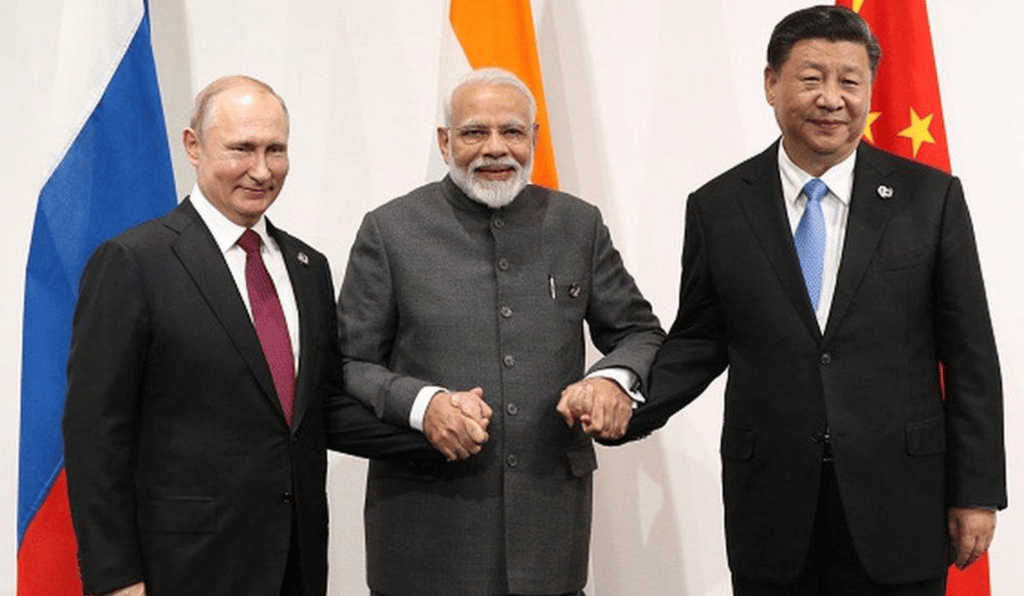China’s Call for Peace: Can India and Pakistan Break the Cycle of Conflict?
5/10/20253 min read


China’s Call for Peace: Can India and Pakistan Break the Cycle of Conflict?
A Tense Standoff in South Asia
On May 9, 2025, a striking post from BRICS News on X caught global attention: China, a key player in the BRICS alliance, expressed concern over the escalating conflict between India and Pakistan, urging both nations to pursue peace. Accompanied by images of Chinese President Xi Jinping, Indian Prime Minister Narendra Modi, and Pakistani Prime Minister Shehbaz Sharif, the post underscored a volatile moment in South Asian geopolitics. Just days earlier, on May 7, India launched missile strikes—dubbed Operation Sindoor—targeting nine sites in Pakistan and Pakistan-occupied Kashmir, following a deadly militant attack in Kashmir that claimed 26 lives, mostly tourists. The strikes resulted in 31 deaths in Pakistan and seven in Indian-controlled Kashmir, intensifying an already fraught situation.
A History of Rivalry
The India-Pakistan conflict is no stranger to global headlines. Rooted in the 1947 partition and fueled by territorial disputes over Kashmir, the two nuclear-armed neighbors have fought multiple wars and engaged in countless skirmishes. The recent escalation follows India’s suspension of the 1960 Indus Waters Treaty on April 25, 2025—a move that shocked analysts, as the treaty had survived two wars and was seen as a model for transboundary water management. India’s decision, announced by PM Modi, aims to redirect water for its own agricultural and hydropower needs, a move Pakistan fears could cripple its water supply during dry seasons. Experts like Hassan F. Khan from Tufts University warn that the absence of treaty constraints could hit Pakistan hard when water flows are lowest.
China’s Role: Peacemaker or Strategist?
China’s call for peace isn’t surprising given its diplomatic rhetoric. At the 2024 BRICS Summit in Kazan, President Xi Jinping emphasized a vision of "common, comprehensive, cooperative, and sustainable security," advocating for peaceful resolutions. In a follow-up X post, a commentary account for Xi urged both nations to "maintain calm, exercise restraint, and refrain from actions that undermine fundamental interests." But China’s position isn’t without scrutiny. X users like@UrbanWolf_23 @ccused China of hypocrisy, pointing to its arms sales to Pakistan, while@AkashHindustanicalled out China’s history of funding proxies and vetoing terrorist designations at the UN Security Council. Others, like@Gurmut, suggested China might be eyeing a strategic advantage, potentially aiming to deepen its influence over Pakistan.
The Social Media Firestorm
The X thread exploded with reactions, reflecting the polarized views on this conflict.
@SolFocus_shared a cartoon depicting China supplying Pakistan with drones while Russia bolsters India with S-400 systems, hinting at a proxy arms race.@yeswanth86accused both China and Pakistan of playing "double standards," while@PankajTX mocked the quality of Chinese equipment, suggesting its failures might be pushing China toward peace talks. Meanwhile, @ANILkaushL raised a critical point: Pakistan’s nuclear capabilities remain a concern, with some arguing India should secure control over them before any peace agreement.
A Deeper Look at the Stakes
The current crisis is a confluence of longstanding grievances and new triggers. India accuses Pakistan of backing cross-border terrorism—a charge Islamabad denies—while Pakistan views India’s treaty suspension and military actions as aggressive overreach. The United States and China have both called for de-escalation, with Beijing advocating for an independent investigation into the Kashmir attack. Yet, the path to peace remains elusive. Historical attempts at reconciliation, like the brief thaw in 2014 when Modi invited then-Pakistani PM Nawaz Sharif to his inauguration, have faltered amid recurring violence.
The stakes couldn’t be higher. Both nations possess nuclear arsenals, and any miscalculation risks catastrophic consequences. The Indus Waters Treaty suspension adds another layer of complexity, as water scarcity could exacerbate humanitarian crises in Pakistan, potentially fueling further unrest. As NPR reported, India’s strikes were "focused and precise," targeting terror camps, but the collateral damage has deepened mistrust on both sides.
Can Peace Prevail?
China’s call for peace, while well-intentioned, faces skepticism given its strategic interests in the region, particularly through the China-Pakistan Economic Corridor (CPEC). For India, trust in Pakistan remains low, with many on X echoing
@UrbanWolf_23’s sentiment that Pakistan must be held accountable for supporting militants. Yet, dialogue remains the only viable path forward. The 2014 cooperation between India and Pakistan to bring perpetrators of a prior attack to justice offers a glimmer of hope, but replicating that spirit in today’s charged climate is a tall order.
What’s Next for South Asia?
As tensions simmer, the international community watches closely. The BRICS alliance, which includes both India and China, could serve as a platform for mediation, but only if all parties commit to transparency and accountability. For now, the region teeters on the edge, with the specter of nuclear conflict looming large. Engaging readers, we’d love to hear your thoughts: Can India and Pakistan find common ground, or are they doomed to repeat history? How should the global community respond to this crisis? And finally, is China a genuine peacemaker, or does it have ulterior motives in this geopolitical chess game? Share your views below!
Word Count: 914
hello@boncopia.com
+13286036419
© 2025. All rights reserved.